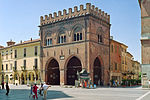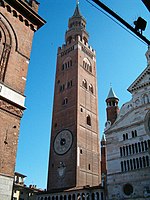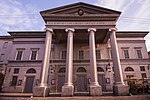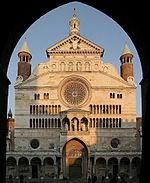Cremona
210s BC establishments218 BCCities and towns in LombardyCremonaMunicipalities of the Province of Cremona ... and 3 more
Pages with Italian IPARoman towns and cities in ItalyTerritories of the Republic of Venice

Cremona (, also UK: ; Italian: [kreˈmoːna]; Cremunés: Cremùna; Emilian: Carmona) is a city and comune in northern Italy, situated in Lombardy, on the left bank of the Po river in the middle of the Pianura Padana (Po Valley). It is the capital of the province of Cremona and the seat of the local city and province governments. The city of Cremona is especially noted for its musical history and traditions, including some of the earliest and most renowned luthiers, such as Giuseppe Guarneri, Antonio Stradivari, Francesco Rugeri, Vincenzo Rugeri, and several members of the Amati family.
Excerpt from the Wikipedia article Cremona (License: CC BY-SA 3.0, Authors, Images).Cremona
Piazza del Comune, Cremona Centro Storico
Geographical coordinates (GPS) Address Nearby Places Show on map
Geographical coordinates (GPS)
| Latitude | Longitude |
|---|---|
| N 45.133333333333 ° | E 10.024722222222 ° |
Address
Piazza del Comune
Piazza del Comune
26100 Cremona, Centro Storico
Lombardy, Italy
Open on Google Maps









